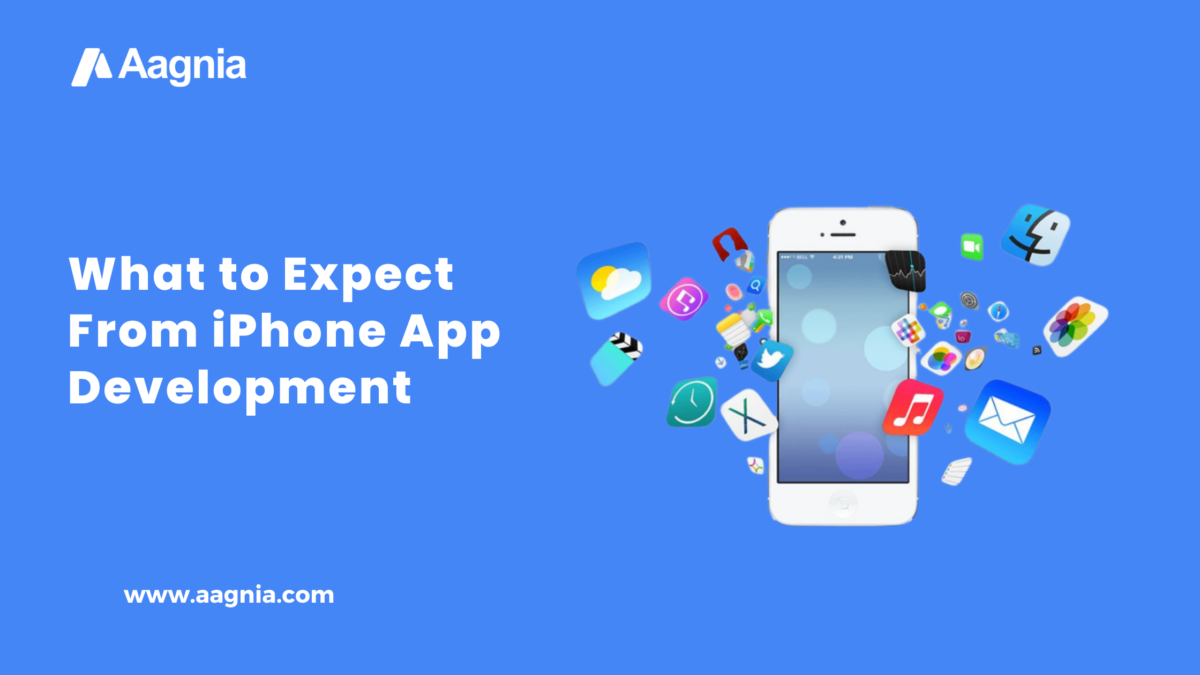
What to Expect From iPhone App Development
Do you have a brilliant concept for an iPhone app? If this is the case, you are not alone. Many people have fantastic ideas for new apps and services that they would like to see on the iPhone.
But you’re not just daydreaming about your one-of-a-kind app concept. You want to do something to bring something new and exciting to the App Store. If this describes you, you should think about working with iPhone app development services.
However, developing an app is not as simple as placing an order and letting a team do all of the work. Before you hire iPhone app developers, you should think about a few things. Before you begin, you should also have an idea of what to expect.
This article will assist you in getting started in the right direction. In this section, we’ll look at the steps involved in developing an app. We’ll also go over the average cost of developing an iPhone app and how to tell if you have a winning app idea.
Continue reading to learn everything you need to know to begin your own app development journey.
Is My App Concept Viable?
One of the most important steps in any business project is market research. Before you put your product on the market, you must be reasonably certain that people will want it. This holds true whether the product is an iPhone app or a kitchen appliance.
Many entrepreneurs begin developing their products or businesses before determining public interest in their concept. While there is nothing wrong with creating something for fun, you most likely want people to download and use your app. How can you validate your concept before investing the time and money needed to develop it?
The first step is to honestly ask yourself what problem your app will solve. If you want to pursue your idea, you should be very clear about who the app is for and what it will do.
Next, look for other apps or services that already meet this need or solve this problem. If the problem your app hopes to solve is real, there is almost certainly already a solution on the market. It’s usually a bad idea to create something that has never been done before because it makes it more difficult to find people who are looking for a solution like yours.
After you’ve identified other apps or products that already solve the problem, consider how your app idea is unique and superior. Does it solve the problem more quickly? Does it meet the need at a lower cost or with less hassle than competing services?
If you can confidently state that your app will meet a specific need for a large number of people and will do so better than anything else on the market, you have a great app idea.
How Much Does it Cost to Create an iPhone App?
Before you can confidently begin work on a new app project, you’ll need to know how much it might cost. However, as you might expect, there is no way to predict how much development will cost ahead of time. Simpler apps are less expensive, while more complex apps are more expensive, but nothing is set in stone.
Each app development process includes a number of factors that are specific to the project. All of these variables will have an impact on the final cost. Even if you can’t be certain how much an app will cost to develop, you can get a good idea of how much to budget for development.
Some of the factors that influence the cost of developing an app include:
App purpose and functionality the actual functions performed by the app
Supported devices and platforms creating an iPhone app is less expensive than creating a cross-platform app.
Hardware features that are supported or required whether the app will use built-in phone sensors such as GPS or motion co-processors.
Points of integration whether or not the app will be integrated with third-party resources to provide content.
Visual assets that are required the quantity and complexity of visual assets
Maintenance plan how much and how long the developer will work on the app after it is completed to fix bugs.
Development costs will be lower if your app runs on a single operating system, supports only a few phones, does not use advanced hardware features, and has few integration points and visual objects. It will cost more if your app needs to be cross-platform and work on multiple devices, uses multiple advanced hardware features, and has complex integration points and visuals.
What Will Happen During the Development Process?
Once you’ve done everything you can to validate your app idea and found a developer, the real work can begin.
To begin, it is important to note that each app development company has its own way of doing things. However, for the majority of projects, the development process can be divided into four stages: pre-design, design, development, and support. Let’s take a look at each of these stages and see what they’re made of.
Pre-Design:
Pre-design is the first stage of the app development process. The developer will create a strategy for your app based on your ideas and specifications. This strategy will describe the purpose, target audience, technologies, and features of the finished app.
The first step in the pre-design process is to identify the app’s primary goals. Depending on the agency you choose, the developer may spend a significant amount of time with you discussing exactly what you want the app to do. They may also conduct research on your target audience and create user personas to help guide their strategy.
The pre-design stage will produce a list of feature recommendations and technical considerations, as well as a project roadmap. This will guide the app’s development team’s future efforts.
Depending on how much time you spent validating your idea, you may have already completed a portion of the pre-design process. If this is the case, the developer may take your existing plan and strategy and devise a new approach that works for them.
Design:
The fun begins at the design stage. Here, the developer will fine-tune the design of your app.
The UI (user interface) and UX (user experience) will be conceived, iterated on, and finalised during the design stage. Afterwards, the developer will have a comprehensive blueprint for the entire app. The design phase consists of five steps: wireframe, concepts, collaborative design, prototyping, and user testing.
First, a wireframe is created. It’s a visual representation of how each screen and function in the app will be linked. Although the wireframe is visual in nature, the emphasis for this step is not on design because the app’s graphics will be created based on it.
The concepts phase is concerned with the app’s visual appearance. Typically, developers will take two or three app screens and design concepts for them. While the wireframe focuses on how the app will function, the concepts show how the app will look when completed.
After the concepts phase is completed, the collaborative design process usually begins. It entails communicating with the client to finalise the functions and appearance of the app.
Finally, prototyping entails creating a visual demo of the app, most likely by stitching together still images of different screens in the order that they would appear to an app user. Despite being only a series of images, the prototype functions like a real app.
Although not all development agencies create interactive prototypes, your developer will do something similar to test the final product. Finally, the user testing stage entails presenting the prototype or demo to a test audience and soliciting feedback.
Development:
After the design stage, you’ll have had the opportunity to test out how your app will work once it’s finished. Now comes the difficult task of actually building the app.
There isn’t much to say about the development stage because it can become quite technical. The developer will create the app from scratch using a programming language, typically Swift for iOS devices. Depending on the complexity of the app, the process can take anywhere between three and six months
The development stage will be filled with testing and troubleshooting as the developer solves problems as they arise. When completed, the first version of the app will be distributed to the client for feedback. The app will also provide you with the source code as the client.
Support:
Your new app will be finished and released to the public in the fourth and final stage. Unexpected issues and bugs are bound to be discovered as people begin to use your app. As a result, the developer will address these issues as they arise during the support stage.
The support stage may last a few months or indefinitely, depending on your contract with the development agency. It is also possible to take your app when it is finished and skip the support stage entirely, though this is not recommended.
Aagnia Technologies Provides iPhone App Development Services:
You should now understand what goes into creating a successful iPhone app. You’ve learned the fundamentals of getting your own app into the marketplace, from validating your original idea to selecting the right developer.
All you need to do now is find the best iPhone app development company and get started. Aagnia, on the other hand, has you covered with industry-leading mobile app development services.
If you believe you have a truly brilliant app idea, you deserve to see it realised. To receive a quote, please contact us today and tell us about your project.

Join our news Letter
- Revolutionizing Parking Management A Real-Time Example
- The Importance of Regular Application Maintenance
- Logistics Software Solutions and Software Development
- Software Development Services for SMEs
- How Does IoT Aid Businesses in a Variety of Industries
- But what exactly is IoT – What does it mean for manufacturers – How can you use IoT to improve your business
- How to outsource custom software development Services
- 5 Reasons Why You Need To Outsource Software Development
- Why You Need A Cloud Strategy
- The Cloud Is Changing Everything, Here’s How To Make It Work For Your Business


